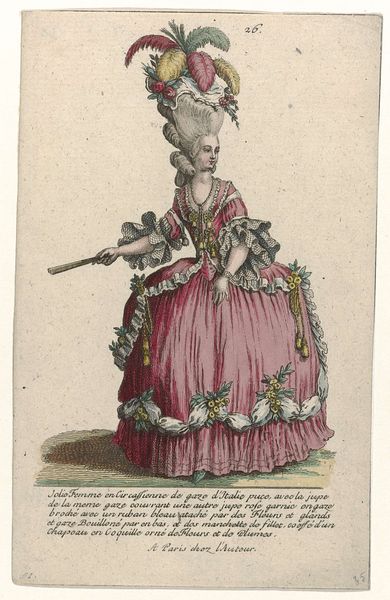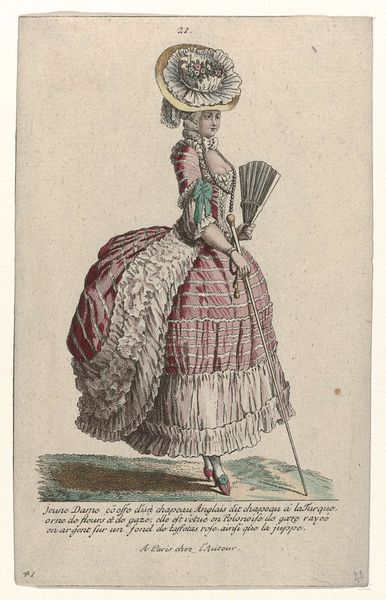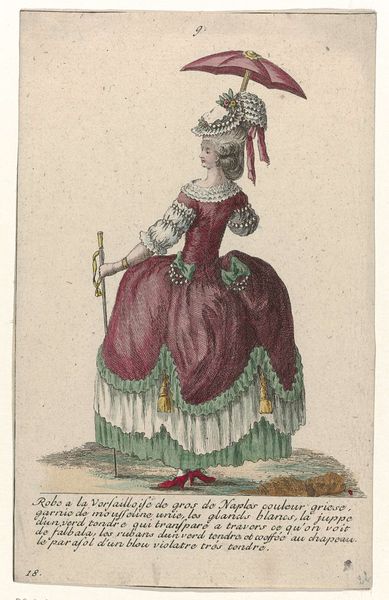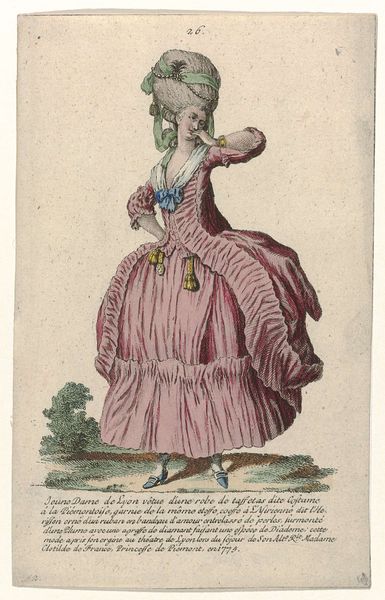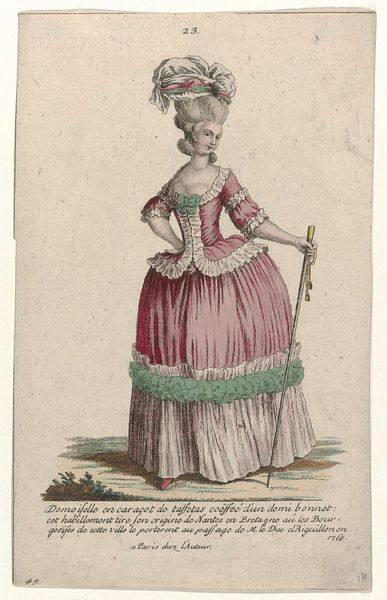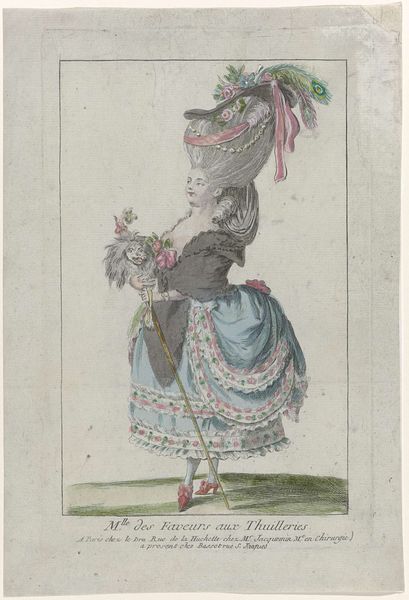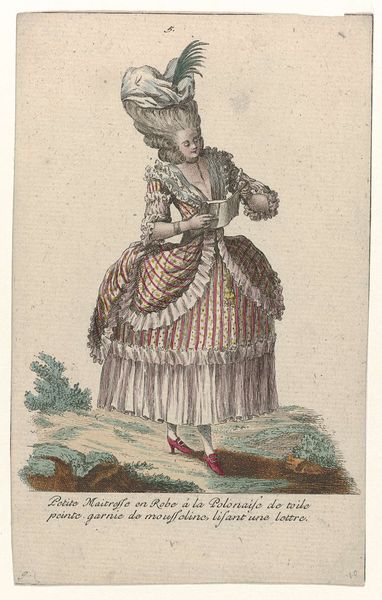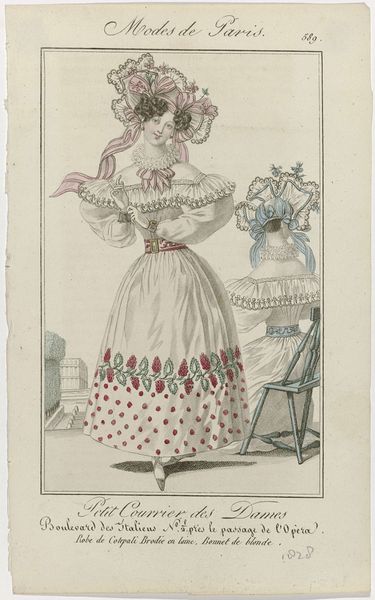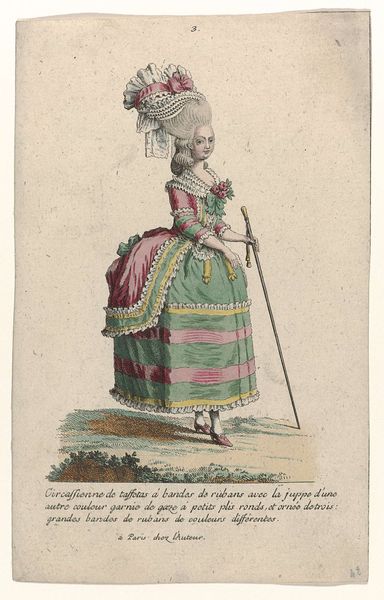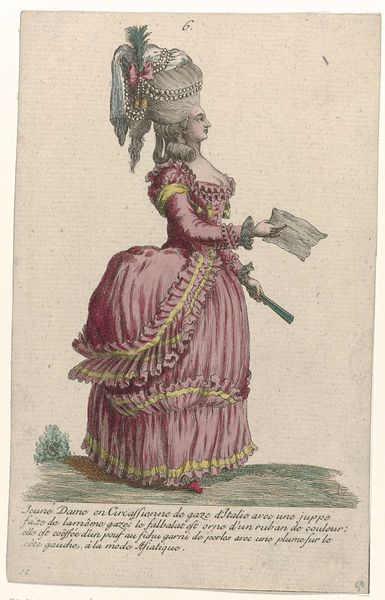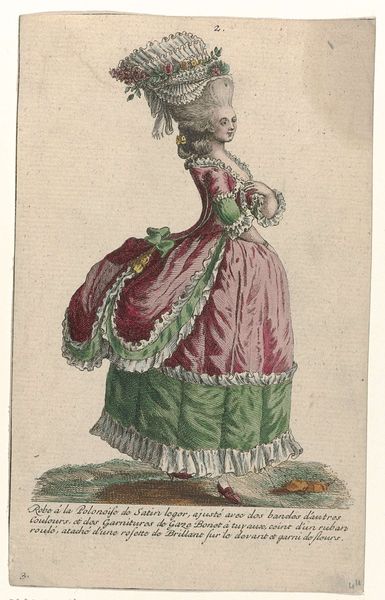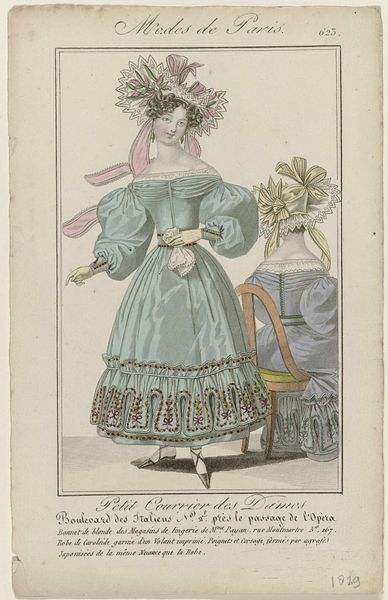
Gallerie des Modes et Costumes Français, 1785, nr. 17, nr. 33, Kopie naar Y 134 : Robe a la Polonoise de toille blanch (...) c. 1785
0:00
0:00
Dimensions: height 176 mm, width 114 mm
Copyright: Rijks Museum: Open Domain
Pierre Gleich made this print around 1785, depicting French fashion using etching and engraving. Consider the fabrics represented: printed cotton for the dress, with a gauze apron, and a decorated hat. Cotton was a relatively new, globally traded commodity at the time, with complex social ties. It grew in the Americas, picked by enslaved laborers, shipped to Europe, spun, woven, printed, and sewn by other workers. The textile printing process involved blocks or plates to transfer the patterns onto the cloth. A labor intensive process. This fashionable "Robe a la Polonoise", with its elaborate shape and decoration, required the hands of many skilled workers. The print itself, made using careful etching and engraving, speaks to another kind of specialized labor. Looking at this image, we see not just clothing, but the end result of intertwined global systems of production and consumption, reminding us that fashion is as much about social context as aesthetics.
Comments
No comments
Be the first to comment and join the conversation on the ultimate creative platform.
